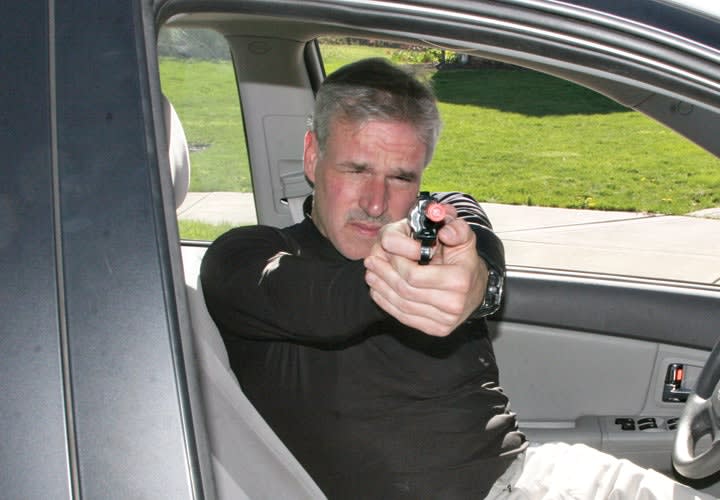When sitting in the driver's seat, you are limited in your defenses against a physical assault. Your hand and leg strikes may not have a good reach, and the power may be reduced. But you do have some counters and defenses.
Let's say a subject reaches into your patrol car and begins punching you or trying to grab your neck. Your initial reaction may be to place your left arm and hand up and against your head to protect it from the strikes. You can use this block and combine it with counter strikes against the assailant.
Try to trap and pin the suspect's arm and then throw strikes into your assailant's face. Then while blocking with your left hand, put the car in drive and pull away.
Depending on the type of assault and if a suspect is armed, you may have to respond with a TASER or handgun. Practice drawing your weapons from a seated position in your car. This helps you understand what works best from within the confines of your car.
If the assailant is at the driver's side window and attacking you with a knife or small impact weapon, try to pin or hold his hand and/or wrist to disarm him. Once you block the attack, draw your handgun.











